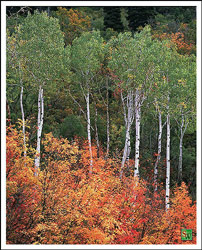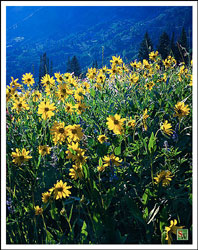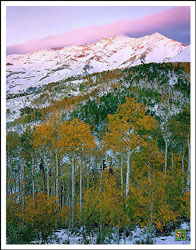|
|
 Normal Lenses in Landscape Photography
Text and photography Copyright Guy Tal
It seems many photographers are in constant pursuit of exotic lenses – either mammoth telephotos, or extreme wideangles. Very few of my peers seem to use, or even own, a normal lens. The word "normal" is highly overloaded, with meanings ranging from "standard" through "typical", and all the way to downright "boring". In this age of ultra-this and extreme-that, "normal" just doesn't sound as exciting. Well, I am here to tell you that normal lenses are anything but boring. They are, in fact, some of the best and most often overlooked optics around. Optical Excellence Normal lenses are defined as lenses whose focal length is close to the diagonal of a given film format. For 35mm film, a normal lens will be in the 45-55mm range, for 4x5 it will be in the 135-180mm range, etc. For a variety of reasons – normal lenses are relatively simple to design, which accounts for them being among the fastest, sharpest, and best-corrected optics in most camera systems. Simplicity in design means less elements, resulting in less distortion, and better control of flare and ghosting. If edge-to-edge optical excellence is high on your list – normal lenses are among the top optical performers. Cost Benefit The fact that normal lenses are simple to design and manufacture, as well as the fact that they are mass-produced and bundled with many camera kits allow manufacturers to offer these lenses at very attractive prices. It is not rare for a normal lens to be the least expensive in any camera system lineup. Versatility A recurring discussion among photographers, especially those who spend much time in the field and are concerned with equipment weight and bulk, revolves around the question "if you could only take one lens with you, which would it be?" To me the answer is obvious – the normal lens is the most versatile of all. With a normal lens I can create close-ups (because they are highly corrected, they still produce excellent results when coupled with diopters, or mounted to extension rings), intimate compositions, and grand scenic landscapes. The added bonus of a large maximum aperture makes these lenses a pleasure to work with even in dim light, and also allows for shallow DOF effects that are not possible even with lenses covering the same focal length (e.g. zooms). The Composition Challenge The real challenge of working with a normal lens is that of producing compelling images using a perspective most people are used to seeing in anyway. Let me elaborate: lenses at both focal length extremes create noticeable optical effects – ultra wide lenses seem to pull the viewer in, distorting elements towards the center of the image, very long lenses compress elements, creating the illusion of them being closer to the viewer and to each other than they actually are. These effects create some interest off the bat – they show viewers something they are not used to seeing. With a normal lens – these effects are non-existent. An image taken with a normal lens must rely solely on the power of composition with no aid from optical effects. It is therefore my belief that the normal lens is the most powerful and the most educational photographic tool – it helps train the eye to see interesting elements and compositions without having to peer through a finder to see how a given lens would alter it. What About Other Lenses? Undoubtedly various scenes and composition work well with a variety of focal lengths. There is no denying some of the most effective images demand extreme perspectives. I believe that mastering the normal lens gives one a starting point – an understanding of the elements of a good composition, irrespective of optical manipulation. Once this skill is mastered, visualizing compositions in all other perspectives becomes easier. Scenes can be judged by eye to determine whether a wider or narrower view is required, compared to normal. Guy Tal - NPN 440 Comments on NPN landscape photography articles? Send them to the editor. |
|
|



